Have you noticed that reading a book or working on a computer has become a bit more challenging lately? Do you find yourself holding menus at arm’s length or squinting to make out small prints? If so, you may be experiencing a common age-related vision change called presbyopia. In this blog, we will explain what presbyopia is and why it affects your ability to see up close as you get older.
Understanding Presbyopia
Presbyopia is a condition that typically occurs between the ages of forty and fifty, although the exact onset can vary from person to person. It is caused by the natural aging process of the eye, specifically changes in the lens and its ability to focus. To understand why presbyopia occurs, let’s take a closer look at how the eye works.
The Aging Lens
In a young, healthy eye, the lens is flexible and can change shape to focus on objects at different distances. This ability to adjust the lens’s shape is called accommodation. However, as we age, the lens gradually loses its flexibility and elasticity. This loss of flexibility affects our ability to focus up close, resulting in blurred vision for nearby objects.
Progressive Changes
Presbyopia is a progressive condition that occurs gradually over time. You may not notice any significant changes until you reach your forties or fifties, but the underlying changes in the lens have been occurring slowly. It may seem as though one day you woke up and suddenly needed reading glasses, but it’s actually been a subtle progression.
Symptoms of Presbyopia
Presbyopia can manifest in various ways, and the symptoms may include:
Blurred Vision Up Close: Difficulty seeing objects up close, resulting in the need to hold reading materials farther away to see them clearly.
Eyestrain and Fatigue: Straining your eyes when working up close for extended periods can lead to headaches, eye fatigue, and discomfort.
Problems with Small Print: Difficulty reading small print, whether it’s on a menu, a smartphone, or a computer screen.
Difficulty Transitioning Focus: Switching focus between near and distant objects can become more challenging, resulting in a delay in clear vision when looking from near to far or vice versa.
Correcting Presbyopia
While presbyopia cannot be prevented or reversed, there are several options to help you regain clear vision for up-close tasks. Some common solutions include:
Reading Glasses: Over-the-counter reading glasses can be purchased at pharmacies or convenience stores and can provide temporary correction for near vision tasks.
Prescription Glasses: If you already wear corrective glasses for nearsightedness, farsightedness, or astigmatism, bifocal or multifocal lenses may be prescribed to correct both distance and near vision.
Contact Lenses: Multifocal contact lenses or monovision (wearing one lens for distance and the other for near vision) can be options for those who prefer contact lenses over glasses.
Surgery: In some cases, refractive surgery techniques such as LASIK or lens replacement surgery may be considered to correct presbyopia.
Regular Eye Exams
It is essential to have regular eye exams, even if you notice no changes in your vision. An eye care professional can detect presbyopia and other eye conditions early on, ensuring that you receive the appropriate treatment and corrective measures to optimize your vision.


0 Comments